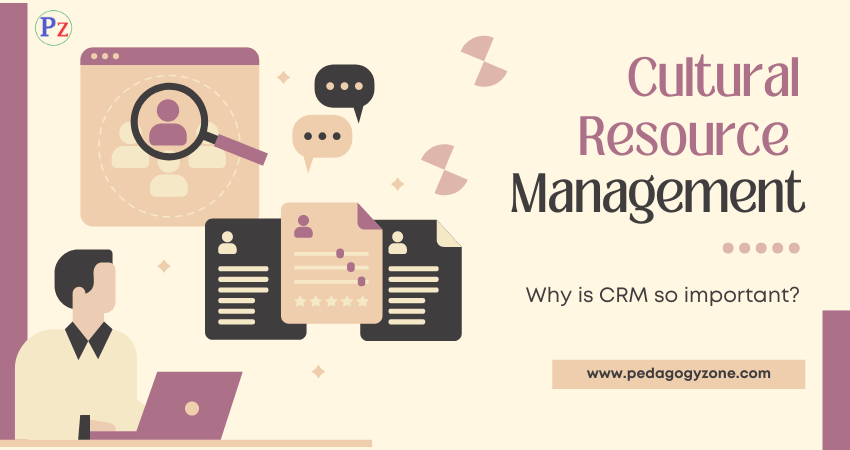Cultural Resource Management (CRM) is a field dedicated to preserving and protecting cultural heritage. It involves the identification, evaluation, documentation, and conservation of cultural resources, which include archaeological sites, historical buildings, artifacts, and landscapes. CRM plays a crucial role in ensuring that the cultural history of a community, region, or nation is maintained for future generations.

Why is CRM so important? Simply put, it safeguards the stories, traditions, and artifacts that define who we are. Without CRM, much of our cultural heritage would be lost to development, neglect, or natural decay. By managing these resources wisely, we can pass down a rich legacy to future generations.
The Evolution of Cultural Resource Management
CRM has evolved significantly over the past century. Initially, it was more about discovering ancient ruins or saving old buildings. But as time went on, the focus shifted toward a more systematic approach to preserving cultural heritage.
The field of CRM began to gain momentum in the mid-20th century as governments and international bodies recognized the need to protect cultural sites. In the United States, for example, the National Historic Preservation Act (NHPA) of 1966 was a turning point, laying the foundation for modern CRM practices and policies.
Key Components of Cultural Resource Management
CRM is an interdisciplinary field that encompasses several components:
Archaeology and Heritage Conservation
Archaeologists play a central role in CRM by identifying and studying sites of historical significance. Their work often involves excavating sites, analyzing artifacts, and making recommendations for preservation.
Anthropology and Ethnography
Understanding cultural heritage goes beyond physical artifacts. Anthropologists and ethnographers help in understanding the cultural, social, and historical context of the resources being managed.
Historic Preservation
This component focuses on maintaining and restoring buildings, landmarks, and landscapes that have historical value. Preservationists work closely with architects, engineers, and local communities to ensure that these structures retain their integrity.
Legal Frameworks Governing CRM
Various legal frameworks and guidelines govern CRM practices. These laws ensure that cultural resources are protected and managed responsibly.
National Historic Preservation Act (NHPA)
The NHPA is a key piece of legislation in the U.S. that mandates the identification and protection of historic properties. It established the National Register of Historic Places and the role of State Historic Preservation Offices.
National Environmental Policy Act (NEPA)
NEPA requires federal agencies to consider the impact of their actions on the environment, including cultural resources. It ensures that potential harm to cultural sites is mitigated.
International Regulations and Guidelines
Organizations like UNESCO also provide international guidelines for protecting cultural heritage. Their conventions, such as the World Heritage Convention, help in safeguarding sites of global significance.
CRM Process: From Discovery to Preservation
The CRM process is a meticulous journey from discovery to preservation. Here’s how it typically works:
Site Identification and Assessment
This is the first step where potential sites are surveyed and evaluated for their cultural and historical significance. Archaeologists, historians, and CRM professionals work together to assess a site’s value.
Impact Evaluation and Mitigation Planning
Once a site is identified, CRM experts evaluate potential threats to its integrity, such as urban development or natural disasters. Mitigation plans are then formulated to address these threats.
Preservation and Management Strategies
Preservation strategies may include measures like site capping, documentation, or even relocation of artifacts. Management plans ensure ongoing maintenance and monitoring.
Role of Archaeologists in CRM
Archaeologists are the detectives of the past. They play a pivotal role in CRM by conducting surveys and excavations to unearth historical treasures. Their findings are crucial in understanding our cultural history and shaping preservation strategies.
Ethical Considerations in Cultural Resource Management
CRM isn’t just about protecting old buildings or artifacts; it’s about respecting the cultural significance of these resources. Ethical considerations are central to CRM, particularly when it comes to indigenous cultures. Respect and collaboration with local communities are vital to ethical CRM practices.
CRM in Urban Planning and Development
Urban planners are increasingly recognizing the value of CRM in city development. Integrating CRM into urban planning ensures that modern development does not erase the past. For example, cities like Rome and Athens have successfully blended ancient and modern landscapes.
Challenges Faced by Cultural Resource Managers
Managing cultural resources is not without its challenges. Funding limitations, stakeholder conflicts, and balancing development needs with preservation can make CRM a complex field.
Technological Innovations in Cultural Resource Management
Technology is transforming CRM. Tools like Geographic Information Systems (GIS), remote sensing, and 3D modeling are making it easier to identify, document, and preserve cultural resources. Virtual reconstructions, for example, allow people to explore ancient sites from anywhere in the world.
Public Engagement and CRM
CRM thrives on public engagement. When communities are involved in heritage projects, there is a greater sense of ownership and commitment to preservation. Public awareness campaigns and educational programs play a key role in promoting CRM.
Case Studies of Successful CRM Projects
Example 1: A Major CRM Project in North America
One example is the preservation of the Mesa Verde National Park in Colorado. The site contains some of the best-preserved cliff dwellings in the U.S., and the CRM strategies implemented there serve as a model for other projects.
Example 2: An International CRM Project
The preservation of the ancient city of Petra in Jordan showcases how international cooperation can lead to successful CRM. Various international organizations and local communities have collaborated to protect this UNESCO World Heritage site.
The Future of Cultural Resource Management
The future of CRM looks promising, with emerging trends focusing on sustainability, inclusivity, and technological integration. As the field evolves, CRM will continue to play a vital role in preserving our shared human heritage.
Cultural Resource Management Definition
Cultural Resource Management (CRM) is the practice of managing, preserving, and protecting cultural heritage resources, including archaeological sites, historic buildings, artifacts, and landscapes, particularly in the context of compliance with legal and regulatory requirements. CRM involves assessing and mitigating the impact of development projects on these resources, conducting research and surveys to document and evaluate their significance, and ensuring that they are preserved or documented for future generations. It bridges the fields of archaeology, history, architecture, and anthropology, emphasizing responsible stewardship and sustainable management of cultural heritage in both public and private sectors.
| Read More Topics |
| Identify and explain the types of benchmarking |
| Leading practices for leadership |
| What do you mean by strategic planning? |



